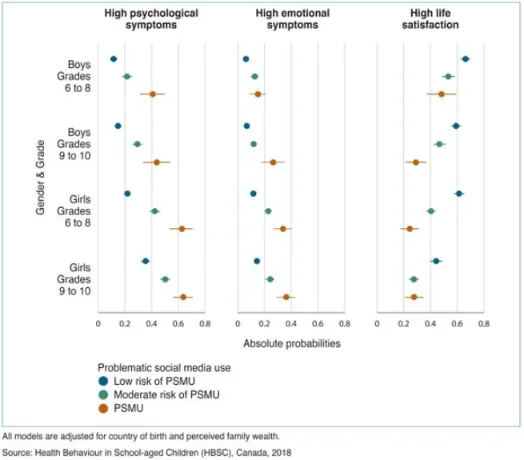The Problem of Using Mobile Apps Among Canadian Kids and Teenagers
In recent years, the use of mobile apps among Canadian kids and teenagers has surged dramatically. While mobile technology offers numerous benefits, the excessive and unregulated use of mobile apps has raised significant concerns among parents, educators, and health professionals. This article delves into the current landscape of mobile app usage among Canadian youth, exploring both its positive and negative impacts, and offers strategies for mitigating potential harms.
Statistics and Trends
Mobile app usage among Canadian youth has become nearly ubiquitous. According to recent studies, over 90% of Canadian teenagers own a smartphone, and a majority of them spend several hours daily on various apps. The COVID-19 pandemic further accelerated this trend, as remote learning and social distancing measures led to increased screen time.
Types of Apps Used
The types of apps most frequently used by kids and teenagers fall into several categories:
- Social Media: Platforms like Instagram, TikTok, and Snapchat dominate the digital lives of teenagers, facilitating social interaction and content sharing.
- Gaming: Apps such as Fortnite, Roblox, and Among Us are immensely popular, providing entertainment and social engagement. Additionally, real money casino apps Canada are also becoming increasingly popular among older teenagers, raising concerns about early exposure to gambling.
- Educational Apps: Tools like Duolingo, Khan Academy, and Google Classroom support learning and skill development.
- Entertainment: Streaming services like YouTube and Netflix are widely used for watching videos and shows.
Mental Health of Canadian Adolescents
Students in grades 6 to 8 generally reported better mental health compared to those in grades 9 to 10. Across both genders, there was an increase in psychological symptoms and emotional problems, while high life satisfaction decreased as students moved from grades 6 to 8 to grades 9 to 10.
Boys indicated having better mental health overall compared to girls. A higher number of girls reported experiencing psychological symptoms and emotional issues, whereas more boys reported higher life satisfaction.
Additionally, students who considered themselves not financially well off were more likely to report psychological symptoms and emotional problems and less likely to report high life satisfaction than their financially better-off peers.
|
Category |
High Psychological Symptoms Weighted % (95% CI) |
High Emotional Problems Weighted % (95% CI) |
High Life Satisfaction Weighted % (95% CI) |
|
Total sample |
28.59 (27.14, 30.08) |
13.66 (12.55, 14.85) |
50.60 (48.51, 52.68) |
|
Girls |
37.03 (34.94, 39.17) |
18.15 (16.57, 19.84) |
44.77 (42.47, 47.10) |
|
Boys |
17.73 (16.37, 19.17) |
7.58 (6.60, 8.70) |
58.58 (56.04, 61.08) |
|
Grade 6 to 8 |
24.36 (22.72, 26.09) |
12.51 (11.17, 13.99) |
55.99 (53.27, 58.67) |
|
Grade 9 to 10 |
34.26 (32.42, 36.14) |
15.20 (13.63, 16.91) |
43.34 (40.82, 45.90) |
|
Foreign born |
28.94 (27.40, 30.53) |
13.76 (12.59, 15.01) |
51.29 (49.24, 53.34) |
|
Canadian born |
26.06 (22.92, 29.48) |
12.76 (10.54, 15.37) |
45.56 (41.05, 50.16) |
|
Perceived family wealth: Financially well-off |
22.88 (21.41, 24.42) |
9.73 (8.73, 10.84) |
60.43 (58.09, 62.72) |
|
Perceived family wealth: Average |
33.75 (31.70, 35.87) |
16.51 (14.67, 18.53) |
39.35 (36.86, 41.90) |
|
Perceived family wealth: Not financially well-off |
47.26 (42.91, 51.66) |
28.09 (24.72, 31.72) |
34.80 (30.02, 39.91) |
According to canada.ca
Positive Aspects
Mobile apps offer several benefits:
- Educational Benefits: Educational apps can enhance learning through interactive and engaging content.
- Social Connectivity: Social media apps help maintain connections with friends and family, especially during times of physical distancing.
- Development of Digital Skills: Using various apps helps kids and teenagers develop crucial digital literacy and technological skills.
Negative Impacts
Despite these benefits, there are several negative impacts associated with excessive mobile app usage:
- Physical Health Concerns: Prolonged screen time can lead to eye strain, poor posture, and a sedentary lifestyle, which are detrimental to physical health.
- Mental Health Issues: Studies have linked excessive app usage to anxiety, depression, and issues like cyberbullying, which are prevalent on social media platforms.
- Academic Performance: Overuse of mobile apps, particularly gaming and social media, can distract from academic responsibilities, leading to poorer performance in school.
Predicted Probabilities of Mental Health
The figure illustrates that the likelihood of experiencing high psychological symptoms and emotional problems is consistently higher in girls compared to boys, regardless of grade level.
In nearly all gender and grade categories, there is a clear increase in the risk of poor mental health outcomes associated with higher levels of problematic social media use (PSMU).

According to canada.ca
Parental and Societal Concerns
Several concerns arise from the widespread use of mobile apps:
- Privacy and Security Issues: Apps often collect vast amounts of personal data, raising privacy concerns. Additionally, kids and teenagers are at risk of encountering online predators and scams.
- Exposure to Inappropriate Content: Without proper monitoring, youth can easily access content that is inappropriate for their age, including violence, explicit material, and harmful ideologies.
- Addiction and Overuse: The addictive nature of many apps, especially games and social media, can lead to compulsive usage patterns that are hard to break.
Case Studies/Examples
Cyberbullying and Mental Health
Emily, a 15-year-old high school student in Toronto, experienced severe cyberbullying on a popular social media platform.
Emily initially joined the platform to stay connected with her friends and participate in online trends. However, after a disagreement with a peer, she became the target of relentless cyberbullying. Anonymous users began posting hurtful comments and spreading false rumors about her.
The constant negative interactions led to a significant decline in Emily's mental health. She started experiencing anxiety and depression, which affected her sleep patterns and appetite. Her academic performance also suffered as she found it hard to concentrate on her studies.
Emily’s parents and school officials intervened when they noticed her drastic behavioral changes. They reported the bullying incidents to the platform and provided Emily with access to counseling services. The school also held workshops on digital citizenship and the effects of cyberbullying.
With support from her family, school, and mental health professionals, Emily gradually recovered. She learned coping mechanisms to handle online interactions better and became an advocate for anti-cyberbullying campaigns.
Gaming Addiction and Physical Health
Jake, a 12-year-old from Vancouver, developed an addiction to an online multiplayer game.
Jake spent several hours daily playing the game, often late into the night. He prioritized gaming over other activities, including homework, family time, and outdoor play.
Jake's excessive gaming led to several physical health issues. He developed chronic headaches, eye strain, and poor posture from sitting for extended periods. His physical activity levels dropped significantly, leading to weight gain and decreased fitness.
Concerned about his health and academic performance, Jake's parents implemented stricter screen time limits and encouraged alternative activities. They enrolled him in a local sports club and scheduled family outings that did not involve screens.
With reduced gaming time and increased physical activity, Jake's physical health improved. He also developed better time management skills and balanced his gaming with other responsibilities and interests.
Social Media Influence and Self-Esteem
Sarah, a 14-year-old girl from Calgary, struggled with low self-esteem due to constant exposure to curated and idealized images on social media.
Sarah followed numerous influencers and peers on social media who frequently posted images that depicted seemingly perfect lives. She began to compare herself to these unrealistic standards, feeling inadequate about her appearance and lifestyle.
This comparison led to a decline in Sarah's self-esteem and confidence. She became obsessed with her looks, often spending hours editing her photos before posting them online. Sarah also started to avoid social interactions, fearing judgment from her peers.
Sarah's parents and school counselor noticed her withdrawal and changes in behavior. They educated her about the unrealistic nature of social media portrayals and encouraged her to take breaks from these platforms. Sarah was also introduced to positive online communities that promote body positivity and self-acceptance.
Over time, Sarah's self-esteem improved. She learned to appreciate her unique qualities and became less affected by the superficial standards set by social media. Sarah also started participating in offline activities that boosted her confidence, such as joining a debate club and volunteering.
Financial Insecurity and Mental Health
David, a 16-year-old student in Montreal, reported high levels of stress and emotional problems linked to his family's financial difficulties.
David's family faced financial challenges, which led to frequent moves and instability. He used social media to stay connected with friends from previous schools, but the constant exposure to his peers' more affluent lifestyles exacerbated his feelings of inadequacy.
The financial stress and constant comparison with wealthier peers contributed to David's anxiety and depression. He struggled with feelings of shame and isolation, often avoiding social interactions and school events.
David's school provided access to a counselor who specialized in helping students cope with financial stress. His parents also sought community resources to improve their financial situation and support David's emotional well-being.
With counseling and community support, David learned strategies to manage his stress and focus on his strengths. He also connected with peers who shared similar experiences, which helped him feel less isolated. David's mental health improved, and he became more engaged in school activities
Strategies for Mitigation
To address these issues, several strategies can be implemented:
- Parental Controls and Monitoring: Using built-in parental controls and monitoring tools can help manage app usage and restrict access to inappropriate content.
- Education on Digital Literacy: Teaching kids and teenagers about responsible app usage, privacy settings, and recognizing harmful content is crucial.
- Encouraging Balanced Lifestyles: Promoting activities outside of screen time, such as sports, reading, and family time, helps create a balanced lifestyle.
While mobile apps offer numerous benefits, the challenges and risks associated with their overuse cannot be ignored. It is essential for parents, educators, and policymakers to work together to ensure that Canadian kids and teenagers use mobile apps in a healthy and responsible manner. By implementing effective strategies and fostering digital literacy, we can mitigate the negative impacts and harness the positive potential of mobile technology.
Sources:
https://www.cbc.ca/news/health/smartphone-brain-nov14-1.7029406
https://www.ncbi.nlm.nih.gov/pmc/articles/PMC7012622/
Donate to Weehelp

Help out Weehelp

Wee in the News

